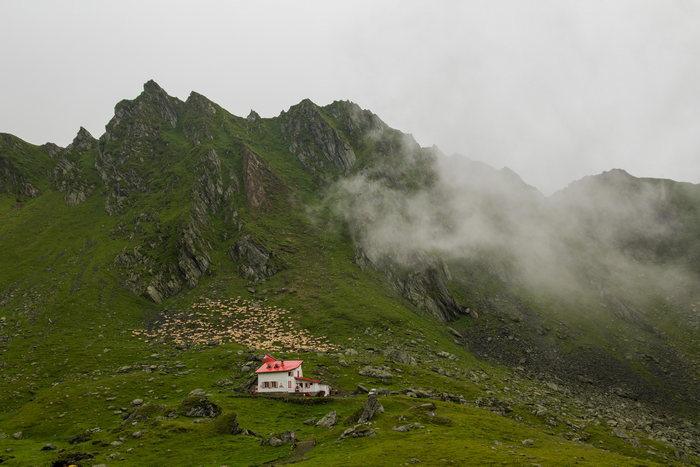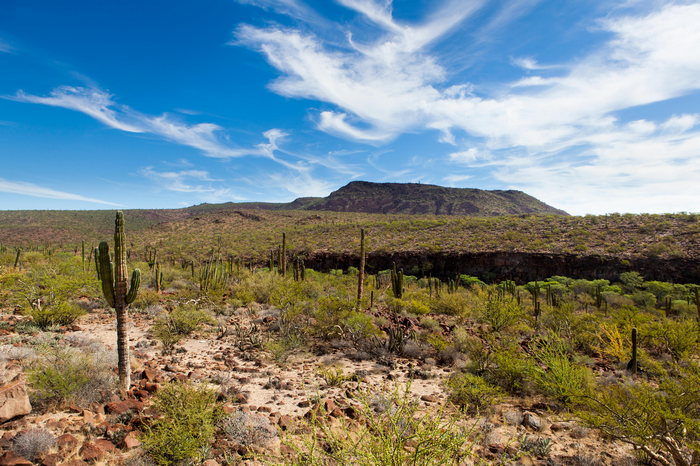Discovery Channel’s World Tour
Our world tour starts with a Tropical island in the Dominican Republic

Very often there is hardly any fresh water on these islands. They are some of the harshest places to survive. There are 45,000 tropical islands in the world and one thing they all share is an abundance of sea life. When looking for sea life in the water, stay away from the blue bottle jellyfish because they are poisonous.
One way you can dive without a mask is to cup your forehead with your hand and make an air pocket under your eyes to focus. Conch shells are among the largest mollusks in the world. They make super lovely fish to eat. You can make a hole in front of the bullet in the third ring from the center. This makes it much harder for the conch to hold one. You can take the meat out to eat raw. Raw seafood is 100% safe, and this tastes like a fresh scallop.
Beaches also contain food. A Beach almond tree contains nuts that you can look for on the ground. Beach almonds are also called “Indian almonds” and grow all over the tropic. Nuts are an excellent source of energy-rich in protein, fats, and carbohydrates. Collect as much as you can to carry around with you.
We spots natural spring water off the shoreline floating on top of the sea water. Natural springs are very rare. Freshwater floats on top of the denser sea water. You can look for water in caves but make sure there is no salt in it. Sometimes freshwater springs can be found.
Coconuts are also a good source of both liquid and food on a tropical island.
To open the coconut find a piece of hardwood and put a bit of an edge on one end then poke it into the coconut. The coconut that is young and green contains more water. Coconut water is so good for hydration that it is used in some hospitals instead of saline fluid.
The beaches along the coastline in temperate regions.
On the beaches, you can find limpets/mussels and spirulina (a type of seaweed) which is full of vitamin B12. Any small crabs you see can be eaten raw. The limpet is the inside of the mussel. Only eat fresh crabs if the water quality is excellent. There is plenty of driftwood lying at the high tide mark. You can use dried grass to catch the spark. Pop the limpets out of the mussel shell and cook them. It is best to prepare mussels adequately.
Next stop: the Carpathian Mountains in Rumania

There are thousands of miles of dense forest in this region. After landing we spots a salamander with bright yellow spots which means that it is poisonous. Do not touch the skin with your hands. These salamanders are slow moving with the yellow spots that have poison in them. This is one thing you don’t want to eat or even touch. In fact, watch out for any crawling insect or amphibian with bright spots or colors because these are warning signals.
You must keep very still so that he does not spot you. The we will pick up on any sudden movement, and if it goes for you, then you need to back away. If you can drop something that is even better, it will buy you time, because, they will go for that first which gives you a chance to get away.
To survive in the forest one must have a weapon.
We finds an arrowhead left by Native Americans who used to hunt bison, elk, and deer. To make an arrow, you need to strip a willow branch down and take off all the outer bark. Then you can use parachute chord or any other type of strong cord to wrap around the arrowhead. Next, you can use heated pine resin and charcoal to make the tip hold on better. The Arrow must have feathers on end in the shape of a spiral to help it spin and fly straight.
Making a bow
To make a bow you can use a live sturdy branch and parachute cord. Don’t make any sudden movements when hunting because the animals will spot you and run away. We spots a bird in the trees above but misses. Survival is all about try, try and try again.
Back to the tropic and into the jungle
If you can survive here, you can survive anywhere. The jungle is home to almost half of the plant and animal species in the world. Not every creature wants you dead; some are happy to eat you alive. Leaches are everywhere in the jungle.
Hidden away in the Camino real trail in Panama is home to the Ortega plant sharp that has sharp barbs in underside. There is a story of soldiers who could not go on anymore because their legs were so soared so they would whip their legs with these spiky leaves from the Ortega plant. This makes your legs go numb so that you don’t feel the pain. After we hits his leg with this spiky plant, it feels boiling and gives them a lift so that he can keep walking. We finds an old termite nest and eats a few termites.
We must get down the rapids to find his way out and down the river to civilization. If you are stranded, and no one is looking for you, you are going to have to get yourself out. The best technique when moving through the rapids is to use a bamboo log to keep your head up and stay on your back with your feet pointing downstream. If you go under don’t fight it, but, let the water spit you out. In the jungle, if you look hard enough, you can find food or water.
Next, we come to the dessert
One-fifth of the world’s land area is desert where food is scarce, and water is almost nonexistent. The temperature reaches 130 degrees in the daytime and below freezing at night. If you get stranded here, you are in big trouble. In the Baja desert in Mexico, the search for cacti may lead to the poisonous Cardon cacti. It has loads of chemicals and toxins in it and will end up killing you faster. This cactus will make you throw up and give you diarrhea.

Using sunlight to purify stagnant water
Down into the canyon floors, water is formed in pools known as Tinajas. There is a way to use sunlight to help purify the stagnant water. Sunlight kills from 60 to 80% of the bacteria in the water. After collecting the water in a plastic or glass container, you can leave it on the back of your knapsack while walking and in 6 hours it should be pure enough to drink.
They see even the faintest of tracks of a hare in the sand and dig down into the burrow. Then they merely pull the hair out.
The final destination is in the polar climates of Siberia
Exposed flesh can freeze in minutes. There are hidden dangers everywhere from crevasses and avalanches to hypothermia. In the cold and antarctic you can’t eat snow to hydrate because it will make you so severe that you will burn your mouth and get ulcers; so don’t do it. You can, however, let it melt in a bottle close to your body. If you are in the glacier country glacial meltwater is pure, pleasant to drink and always refreshing. In Siberia, temperatures have known to plummet minus 90 degrees.
Siberians drill holes to fish for perch and carp. A spring from a toggle can make an improvised hook, and a bit of a candy wrapper can be used as a lure. Under your feet in the frozen lake there is food, but you need drill a hole in the lake. We used the cord from parachute for a fishing line and the deer meat he found for bait. Perch feed in even the coldest water. He uses the deer leg to cut a hole in the lake. After waiting as long as he could, there are no fish on his line, but, we needs to move on because he is so cold sitting around on the frozen lake.
A rock face blocks the route to the coast so he takes a shortcut through an ice cave. He needs to get through ice caves as quickly as he can because they are continually changing and the water refreezes. When you get to the coast, you can get rescued. The most important survival tool is your mind.

